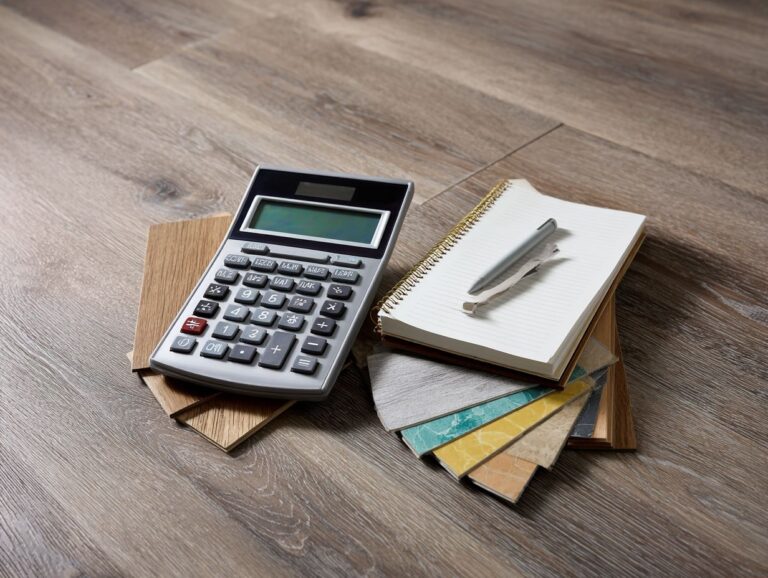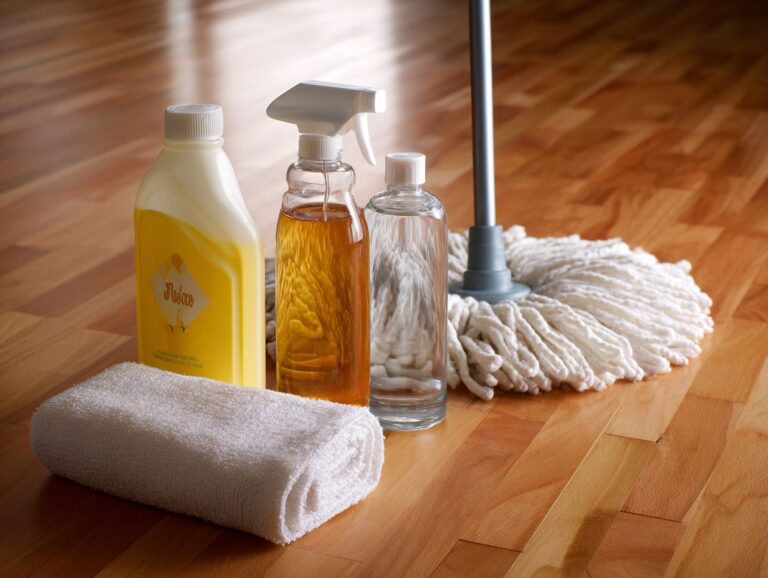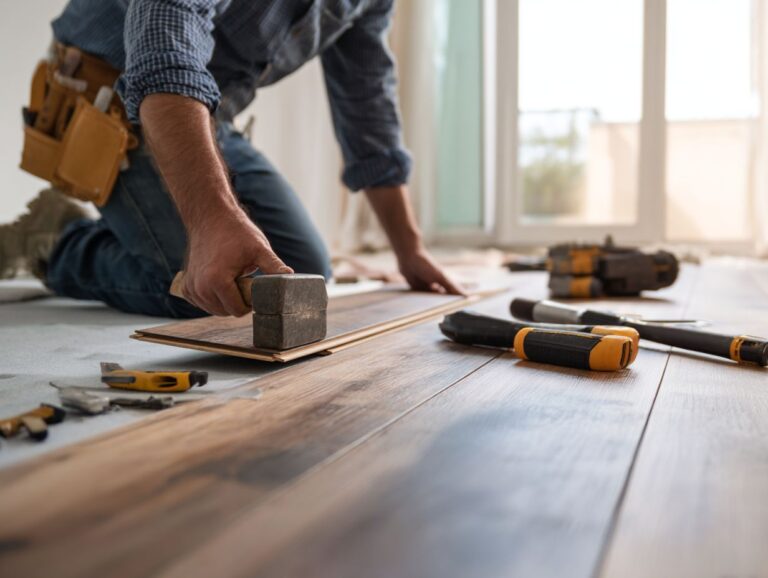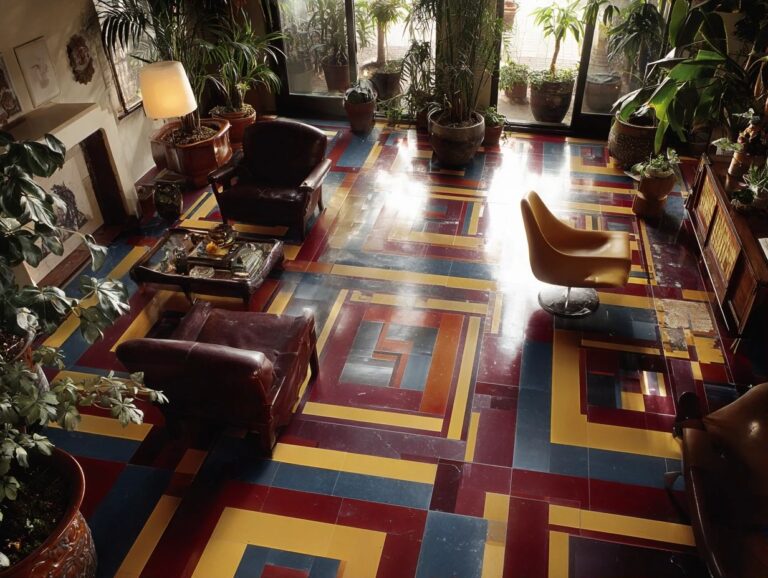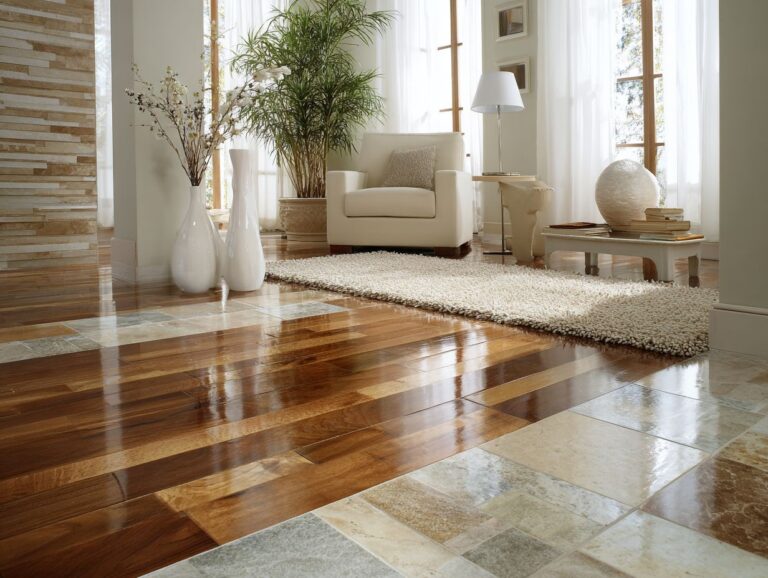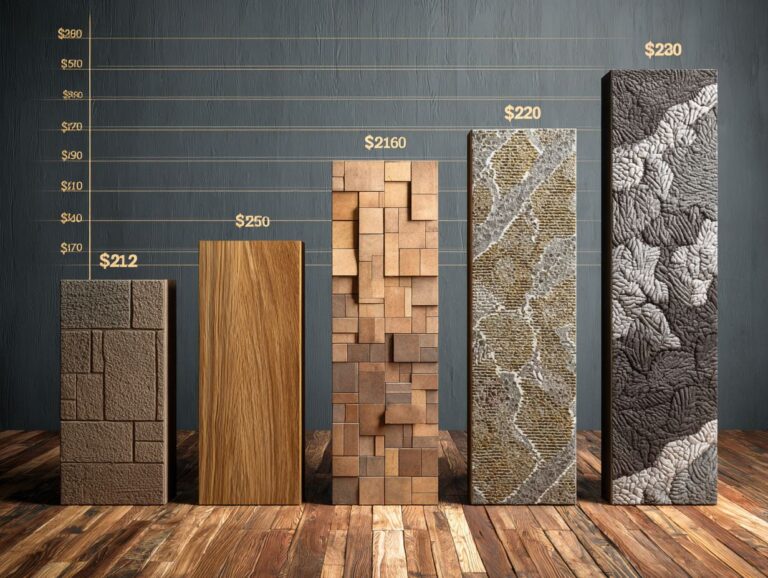Epoxy Flooring Systems – Residential Applications Guide
Change the look of your home with epoxy flooring, a practical option for your garage and basement floors. Famous for its strength, this DIY task improves appearance and holds up well against regular use. In this detailed guide, we’ll look at different ways you can use epoxy flooring in your home, helping you pick the right one for your needs. Learn how to make a beautiful and durable area that will endure for many years.
Key Takeaways:
Contents
- Types of Epoxy Flooring Systems
- Preparation for Installation
- Installation Process
- Maintenance of Epoxy Floors
- Common Applications in Residential Settings
- Residential Epoxy Flooring Market Data
- Frequently Asked Questions
- What are epoxy flooring systems?
- What are the benefits of using epoxy flooring systems in residential applications?
- Can epoxy flooring systems be used in all areas of a residential home?
- Are epoxy flooring systems suitable for DIY installation?
- How do I maintain and clean epoxy flooring systems in a residential setting?
- Can epoxy flooring systems be customized for a unique design?
What is Epoxy Flooring?
Epoxy flooring consists of a two-part system, combining resin and hardener that, when mixed, create a strong and durable surface suitable for various environments.
The chemical reaction between the resin and hardener forms a bond that is resistant to stains, impacts, and harsh chemicals.
Common applications of epoxy flooring include residential garages, where it provides a seamless, easy-to-clean surface, and commercial kitchens, where its durability withstands heavy foot traffic and spills.
It can be used in warehouses to improve safety and function, as the shiny finish makes things easier to see.
When planning installation, make sure to prepare the surface correctly and allow enough time for curing to get the best outcome.
Benefits of Epoxy Flooring
Epoxy flooring offers many advantages, like being slip-resistant, long-lasting, and easy to clean, which makes it popular in homes and businesses.
One key advantage of epoxy flooring is its exceptional durability, which can last up to 20 years with proper care.
For example, adding a non-slip material makes the surface safer by keeping it grippy even when wet.
Cleaning it is simple; use a pH-neutral cleaner and a mop for routine maintenance. In commercial spaces, this combination of benefits helps minimize downtime and repair costs, creating an efficient and cost-effective flooring solution.
Types of Epoxy Flooring Systems
Different epoxy flooring types are available to suit different needs and preferences, ensuring there is a suitable choice for every project. For instance, epoxy flooring offers advantages that differ from traditional tile flooring methods, including those discussed in our comparison of grout types for tile flooring.
Self-Leveling Epoxy
Self-leveling epoxy results in a flat and durable surface, ideal for floors with uneven areas that require a smooth finish.
- To apply self-leveling epoxy, start by thoroughly cleaning and repairing any damaged areas of the floor.
- Next, mix the epoxy resin and hardener according to the manufacturer’s instructions.
- Pour the mixture in sections and use a roller to spread it evenly.
- For optimal results, keep the temperature between 60-85 degreesF and make sure there is good airflow.
Successful projects often include basement floors and commercial showrooms, showing its versatility in both residential and industrial applications.
With proper installation, self-leveling epoxy floors can last for years with minimal maintenance.
Epoxy Mortar Systems
Epoxy mortar systems mix epoxy with materials like gravel or sand to create a strong surface suitable for busy areas and industrial uses.
These systems are well-known for their ability to withstand strong impacts and harsh chemicals, making them ideal for places such as food processing plants, warehouses, and industrial kitchens.
For instance, they can withstand frequent exposure to caustic cleaning agents and heavy machinery traffic without degrading. For the best results, think about using particular mixtures, like those with aluminum oxide for slip resistance or colored aggregates for appearance.
When properly installed, epoxy mortar systems improve safety and create a long-lasting surface that is easy to maintain.
Graveled Epoxy
Graveled epoxy systems use decorative stones to create attractive finishes that improve the look of any area.
This practical flooring choice is perfect for homes, especially in areas like patios and garages, where long-lasting and attractive materials are needed.
The application begins with a base layer of epoxy, followed by the broadcast of decorative flakes that can be customized in color and size. For instance, a sandy beige finish can create a warm atmosphere on a patio, while darker fragments may add sophistication to a garage.
Successful installations often include additional treatments for UV resistance and slip combat, ensuring both longevity and safety. These features make gravelled epoxy an attractive choice.
Flake Epoxy Systems
Flake epoxy systems use colorful vinyl chips to create a unique multicolored surface that looks great and serves a practical purpose.
To install flake epoxy, start by preparing the concrete surface; this involves cleaning and filling any cracks.
Next, mix the epoxy resin according to manufacturer instructions, usually blending a base with a hardener.
Apply the mixture evenly with a roller, then broadcast the vinyl flakes while the epoxy is still wet to achieve desired coverage.
The benefits are that it doesn’t slip and is simple to install, making it ideal for garages and business spaces.
XYZ Company upgraded their warehouse floors with this system, making them safer and better-looking.
Preparation for Installation
Proper preparation is essential for a successful epoxy flooring installation because it affects how well the epoxy sticks and the quality of the finished floor. Curious about the different types of materials and their effects on flooring? Our analysis of grout types for tile flooring provides valuable insights.
Surface Assessment
Checking a surface correctly means looking at the concrete base for flaws, dampness, and overall condition to make sure it sticks well.
Start by visually inspecting the surface for visible cracks and spalling. Use a moisture meter to check moisture content, ensuring levels are below 4% for optimal adhesion. A scratch test can help identify weak patches that may need repair.
As a checklist for assessment, include:
- Inspect for cracks wider than 1/8 inch;
- Check for flaking;
- Use a moisture meter;
- Perform the scratch test.
This method can help with required repairs and get the surface ready for more treatments.
Cleaning and Repairing the Substrate
Properly cleaning and repairing the substrate is essential, as any contaminants or defects can compromise the epoxy bond and the longevity of the floor.
- Start by removing any loose debris with a vacuum or broom.
- For heavy-duty cleaning, use a floor scrubber with a suitable cleaning solution to eliminate grease or dirt.
- If you encounter cracks or pits, fill them with an appropriate epoxy patch compound, ensuring the surface is level.
- Once the repairs cure, use a concrete grinder to smooth uneven areas, creating an ideal surface for your epoxy installation.
- This entire process typically takes a full day, allowing for drying and preparation before applying the epoxy.
Moisture Testing
Testing for moisture is important before installing epoxy. Too much moisture can cause the epoxy to not stick properly and may harm the floor over time.
- To perform moisture testing, start by sealing the concrete surface with plastic sheets for 24-48 hours to check for condensation.
- Next, use a moisture meter to gauge levels; acceptable moisture content generally lies below 4-5%.
- Common pitfalls include neglecting to seal all edges of the plastic, leading to false readings, and forgetting to calibrate the moisture meter.
- Always retest after significant changes in temperature or humidity, ensuring your environment is stable before installation.
Installation Process
Installing epoxy flooring needs careful work to make sure every part helps create a strong and enduring surface. For those interested in the different types of grout used in flooring, including epoxy varieties, our elaboration on grout types for tile flooring provides valuable insights.
Mixing Epoxy Components
Mixing the epoxy parts correctly is essential because incorrect amounts can cause problems with hardening and result in a poor finish.
For most epoxy brands, use exactly two parts resin to one part hardener for a successful mixture. Start by measuring 1 cup of resin and cup of hardener.
Employ a mixing paddle attached to a drill for thorough mixing, ensuring you scrape the sides and bottom of your container. A visual cue of a proper mix includes a uniform color without streaks. After mixing, pour the epoxy into your project area within 30 minutes for optimal adhesion and curing outcomes.
Application Techniques
Applying epoxy flooring requires specific techniques to achieve a smooth and even finish, significantly impacting the floor’s performance and aesthetics.
- Start by properly preparing the surface; clean it thoroughly and repair any cracks or imperfections.
- Using tools like a paint roller with a long nap can help distribute the epoxy evenly. Apply the first coat in sections, working from one corner to the opposite side to avoid stepping on wet areas.
- For a uniform finish, use a squeegee to spread the epoxy and eliminate bubbles; remember to maintain a consistent speed.
- Wait at least 24 hours before putting on a second coat to make sure it sticks well.
Curing and Drying Times
Proper curing and drying times are essential for achieving the desired strength and durability of the epoxy flooring system.
For optimal results, typical epoxy curing times can range from 24 hours for fast-curing epoxies to 7 days for thick applications.
Environmental factors are important; try to keep temperatures between 70 degreesF to 85 degreesF and humidity levels under 60%. After installation, schedule tasks like furniture placement or foot traffic to commence after the recommended curing period.
For instance, if using a medium-curing epoxy, wait a full 3 days before allowing moderate traffic. Good ventilation in the area helps things dry faster.
Maintenance of Epoxy Floors
Maintaining epoxy floors is essential for preserving their appearance and extending their lifespan. This involves certain cleaning and maintenance steps.
Cleaning Procedures
Setting up proper cleaning methods keeps epoxy floors looking good and working well. You’ll need certain tools and ways to clean them the best.
- To maintain epoxy floors, start by sweeping or vacuuming to remove dust and debris.
- Next, use a pH-neutral cleaner, such as Simple Green, mixed with water. Apply the solution using a microfiber mop for effective dirt removal without scratching the surface.
- For stubborn stains, consider a non-abrasive scrubber. Always wear gloves and avoid harsh chemicals like ammonia, which can damage the epoxy finish.
- Mopping your floors every two weeks will keep them in good shape and extend their lifespan.
Repairing Damage
Fixing any damage to epoxy flooring quickly is important to stop it from getting worse and to keep it strong and looking good.
To repair scratches or chips, follow these steps:
- First, clean the damaged area with a mild detergent to remove dust and grease.
- Next, use a floor repair kit specifically designed for epoxy, such as Rust-Oleum EpoxyShield ($25).
- Apply the repair compound with a putty knife, smoothing it flat with the surrounding surface.
- Allow it to cure as per the manufacturer’s instructions, typically 24 hours.
- For minor touch-ups, consider using a colored epoxy pen for a seamless finish, ensuring the color matches your floor.
- Regularly inspect your floors to address minor issues before they escalate.
Common Applications in Residential Settings
Epoxy flooring is becoming popular in homes because it is strong, long-lasting, and looks good in different spaces.
Residential Epoxy Flooring Market Data
Residential Epoxy Flooring Market Data
Market Growth: Market Size Growth
Global Epoxy Coating Market: Market Size
The Residential Epoxy Flooring Market Data offers important information about the development path of the epoxy flooring industry, with an emphasis on its use in homes and its wider worldwide setting. This information shows predicted market growth and yearly growth rates, giving a complete picture of upcoming industry trends.
Market Growth in the residential sector indicates significant expansion from a 2024 estimated market size of $1.2 billion to a projected market size of $2.5 billion by 2033. This growth represents a CAGR of 9.2% from 2026 to 2033. The fast growth shows that more people are choosing strong and good-looking flooring options because they last a long time, don’t need much care, and come in many design choices.
- In the Global Epoxy Coating Market, the 2023 global market size is $40.72 billion, projected to grow to $42.92 billion in 2024 and further to $63.89 billion by 2032. This data highlights the widespread adoption of epoxy coatings across various industries, including automotive, construction, and electronics, contributing to its substantial growth.
The significant growth in both residential and global markets reflects an increasing demand for epoxy coatings due to their application versatility and superior performance characteristics. People and businesses are looking for solutions that are both affordable and good for the environment. Epoxy flooring and coatings are popular because they are tough and can withstand damage from chemicals and other environmental factors.
The Residential Epoxy Flooring Market Data emphasizes the potential for growth and innovation within this sector. With continued advancements in technology and material science, the epoxy flooring industry is well-positioned to cater to expanding consumer demands for high-quality, durable flooring solutions.
Garages
Epoxy flooring is a great choice for garages because it provides a durable surface that resists stains and impacts, making it ideal for busy areas.
The benefits of epoxy extend beyond its tough exterior. It creates a seamless, easy-to-clean surface that resists oil stains, chemicals, and abrasions-ideal for car maintenance.
For installation, prepare your garage by cleaning the concrete thoroughly and repairing any cracks. Check the moisture level with a meter; epoxy will stick best if the moisture is under 4%.
Consider an epoxy kit with a built-in primer and limit application to temperatures above 60 degreesF to achieve the best results. By following these steps, your garage floor will look good and stay in good condition for a long time.
Basements
Putting epoxy flooring in basements can make the area more useful and attractive and help manage moisture problems often found in basements.
To apply correctly, begin by checking moisture levels with a calcium chloride test kit, which measures moisture amounts and limits.
Prepare the concrete by cleaning it thoroughly and allowing it to dry completely.
When prepared, epoxy is used in two steps: first, combine a resin with a hardener, then add a silica sand layer to improve slip resistance.
Many homeowners have shared long-term success stories. For instance, in a basement of a house built in the 1900s, careful groundwork and high-quality epoxy created a bright, strong finish that addressed ongoing moisture issues.
Patios and Outdoor Spaces
Epoxy flooring improves patios and outdoor areas by offering a stylish, tough surface that can endure different weather conditions.
Epoxy provides many advantages for use outside. For instance, you can choose from a variety of color options like granite, speckled, or solid hues to match your aesthetic.
Slip-resistant additives can be mixed in, ensuring safety during wet conditions. Some successful examples include a homeowner in Florida who changed their poolside area with a bright red epoxy, adding both attractiveness and strength.
A commercial caf in California used a gray epoxy surface that made outdoor dining better and made cleaning easier.
Final Thoughts on Epoxy Flooring
In the end, choosing epoxy flooring offers lasting advantages and can greatly improve how a space works and looks.
To install the product properly, first clean the area completely and fix any cracks.
Epoxy kits like Rust-Oleum’s EpoxyShield or Epoxies.com are durable and come with easy-to-follow instructions.
After applying the primer, allow it to cure overnight before mixing the epoxy and hardener. Use a roller with a -inch nap for even coverage.
Regular care, such as quickly cleaning up spills and resealing the surface occasionally, will keep your flooring in excellent condition and make it last much longer.
Frequently Asked Questions
What are epoxy flooring systems?
Epoxy flooring systems are a type of durable and long-lasting flooring option made from a combination of resin and hardener. They are commonly used in residential, commercial, and industrial settings due to their strength and versatility.
What are the benefits of using epoxy flooring systems in residential applications?
Epoxy flooring systems provide many advantages for homes, such as being long-lasting, resistant to stains and chemicals, easy to clean, and allowing for a personalized look. They last for many years, which saves money over time.
Can epoxy flooring systems be used in all areas of a residential home?
Yes, epoxy flooring systems can be used in almost any area of a residential home, including basements, garages, kitchens, bathrooms, and even living spaces. They are suitable for both high-traffic areas and spaces that require a more decorative touch.
Are epoxy flooring systems suitable for DIY installation?
While some homeowners may choose to install epoxy flooring systems themselves, it is generally recommended to hire a professional for the best results. Properly preparing the surface and using correct application methods are important for a successful and durable installation.
How do I maintain and clean epoxy flooring systems in a residential setting?
Epoxy flooring systems are relatively low maintenance and easy to clean. Regular sweeping or vacuuming and occasional mopping with a mild detergent and water is usually all that is needed. It is important to avoid using harsh chemicals or abrasives that can damage the surface.
Can epoxy flooring systems be customized for a unique design?
Yes, one of the major advantages of epoxy flooring systems is their ability to be customized with various colors, patterns, and textures. This makes them a favorite for homeowners wanting a special and custom flooring option.
